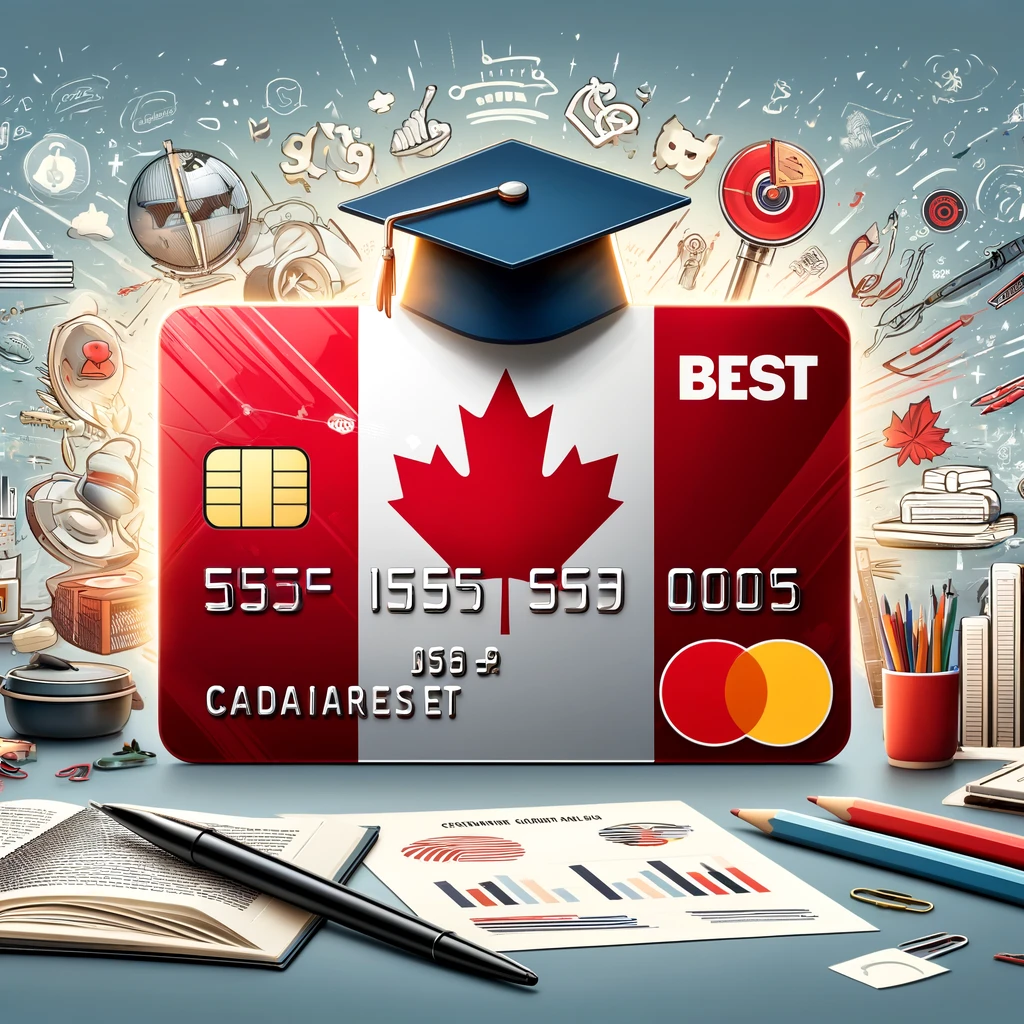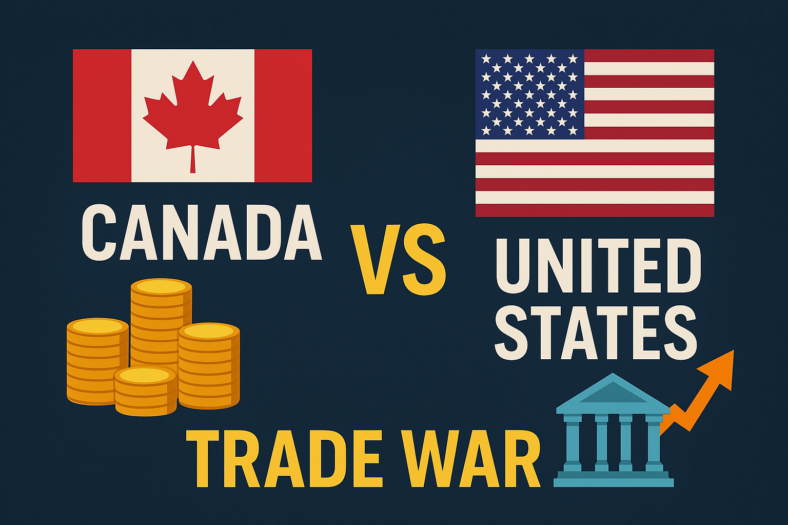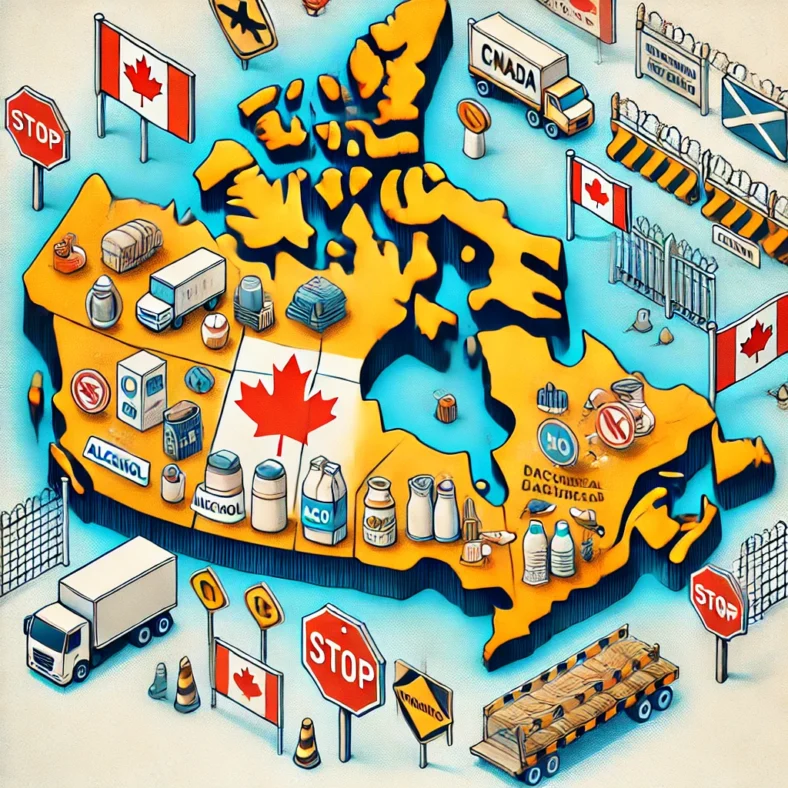The Best Credit Cards in Canada Compared
| Compare | Ratestead Rating | Annual Fee | Annual Rewards | Welcome Bonus | Learn More |
|---|
| APPLY NOW | /10 |
With so many credit cards available, it can be difficult to know which one is right for you. Choosing the right one for your financial needs and lifestyle is even more important than ever before. That’s why we are here to provide you with a guide to the best credit cards in Canada. Look no further – Ratestead.ca brings with it a plethora of new credit card launches boasting exciting offers, rewards, and cashback benefits. From balance transfer cards offering zero interest periods to rewards cards that award points for travel and entertainment purchases, the options are seemingly endless. Armed with the latest research from top financial magazines and industry experts, savvy Canadians can select the best option for their needs. With careful consideration given to fees, APR rates and redemption options, shoppers will be sure to find great value when choosing their next credit card in Canada.
A Beginner’s Guide to Credit Cards in Canada
If you’re new to the world of credit cards, it can be quite overwhelming. Not only do you need to find the right card for your needs but you also have to understand how interest rates and fees work. Thankfully, this beginner’s guide will provide you with all the information necessary to make an informed decision on credit cards in Canada. Read on to learn more!
Types of Credit Cards
The type of credit card that is right for you depends on your individual needs as a consumer. Here are some common types of credit cards in Canada:
- Low Interest Rate Cards – These cards come with a low annual fee and may offer rewards programs such as cash back or points. They are ideal for people who want a reasonable rate while they pay off their balance each month.
- Rewards Cards – Rewards cards give customers the opportunity to earn points or cash back when they use their card for purchases. This type of card is great for people who travel often or like to shop because rewards can be used for discounts and other perks.
- Balance Transfer Cards – Balance transfer cards are designed for those who want to reduce the amount of interest they pay on existing debt. This type of card allows users to transfer their balances from one credit card account to another at a lower interest rate so that more money goes towards paying down the principal balance rather than being spent on interest charges.
- Secured Credit Cards – Secured credit cards require consumers to put up a deposit before they can spend using the card, which acts as collateral if payments are missed or defaulted upon. This type of card is great for those who want help building their credit score but don’t want the risk associated with unsecured debt products.
Interest Rates and Fees
It’s important that you understand how interest rates and fees work when it comes to credit cards in Canada. Interest rates can vary depending on your chosen provider, but most charge around 19-22% annually (APR). Additionally, some providers may charge an annual fee which can range from $20-$150 per year depending on what kind of benefits it offers (such as rewards programs). To avoid unnecessary fees, make sure that you read through all terms and conditions prior to signing up for any product!
Here’s a beginner’s guide to credit cards in Canada:
Know your credit score: Before you start applying for credit cards, it’s essential to know your credit score. In Canada, credit scores range from 300 to 900, with a higher score indicating better creditworthiness. A good credit score is crucial to getting approved for credit cards with favourable interest rates and rewards.
Understand the different types of credit cards: Credit cards come in different types and are designed for different needs. Some cards offer cashback rewards, while others offer travel rewards or points that can be redeemed for merchandise. Be sure to compare different types of credit cards to find one that suits your needs and spending habits.
Choose a credit card that fits your lifestyle: Once you understand the different types of credit cards, choose one that fits your lifestyle. If you spend a lot on groceries and gas, consider a credit card that offers cashback rewards for those purchases. If you travel frequently, a travel rewards card may be a better fit.
Read the fine print: Before you apply for a credit card, be sure to read the fine print, including the interest rate, annual fees, and any other fees associated with the card. This will help you make an informed decision and avoid any surprises down the road.
Pay your balance in full each month: One of the most important things you can do as a credit card user is to pay your balance in full each month. This will help you avoid high-interest charges and keep your credit score in good standing.
Monitor your credit card activity: Regularly checking your credit card activity will help you catch any fraudulent charges and avoid overspending. Most credit card companies offer online access to your account, making it easy to keep track of your spending.
Don’t apply for too many credit cards at once: While it may be tempting to apply for multiple credit cards to take advantage of rewards, applying for too many at once can negatively impact your credit score. Only apply for credit cards that you need and that fit your spending habits.
What You Need to Know About Credit Cards
Credit cards are an incredibly useful tool for managing your finances. They provide convenience and flexibility, but they can also be dangerous if you don’t know what you’re doing. In this blog post, we’ll explain the basics of how credit cards work so that you can make sure you use them responsibly.
What is a Credit Card?
A credit card is a type of loan that allows you to borrow money from a financial institution or bank in order to make purchases without having to pay for them upfront. You must repay the borrowed money with interest over time, usually on a monthly basis. In exchange for borrowing money, you get the convenience and security of not having to carry cash with you everywhere you go. Plus, many credit cards offer rewards and other benefits such as cashback, free travel points, or discounts on certain purchases.
How Do Credit Cards Work?
When you use your credit card to purchase something, the merchant sends your transaction information to their bank or financial institution which then sends it along to your credit card issuer (typically a bank). The issuer then pays the merchant on behalf of its customer (you), often times within minutes after the purchase has been made. The customer then receives a statement at the end of each billing cycle showing all their transactions and any fees associated with them (e.g., late payment fees). The customer is then responsible for paying off the full balance by the due date in order to avoid further fees or penalties.
Limits and Interest Rates
Most credit cards have limits as to how much money can be borrowed at any one time. Typically these limits range from $500-$10,000 depending on factors such as your income level and creditworthiness (how likely you are to repay what was borrowed). Additionally, most credit cards come with an annual percentage rate (APR) which is the amount of interest charged annually on unpaid balances; APRs typically range between 10-30%. It’s important to note that interest rates can change over time depending on market conditions and other factors so it’s important that customers review their statements regularly and contact their issuer if they have questions about any changes made.
What Credit Cards are Accepted in Canada?
With the rising popularity of online shopping and digital payment methods, it’s important to know which credit cards are accepted in Canada. There is a wide variety of accepted credit cards and debit cards, but which ones are the most accepted? In this blog post, we will discuss the most popular credit cards in Canada, their acceptance rates, and why they are preferred by consumers.
Visa and Mastercard (Interac)
Visa and MasterCard have become the two most widely accepted forms of payment in Canada. These two major players dominate the market with high acceptance rates at nearly all stores across the country. Visa and Mastercard come with a variety of features including cash back rewards, fraud protection, travel insurance, rental car insurance coverage, purchase protection plans and more. This makes them attractive to customers who want to get a little something extra from their card.
American Express
American Express is another frequently accepted form of payment but not as widely as Visa or MasterCard because its acceptance rate is slightly lower than that of other major brands. That being said, American Express does offer some great benefits such as purchase protection plans for eligible purchases made on an American Express card. Additionally, many businesses offer special discounts when using an American Express card so customers can save money when shopping with this brand.
Debit Cards
Debit cards have become increasingly popular in recent years due to their convenience and safety features. They are also widely accepted at stores across Canada since they are directly linked to your bank account. Debit cards offer customers easy access to funds without having to carry around large amounts of cash or worry about spending too much. They also provide fraud protection since they require customers to input a PIN number before making any purchases so there’s no risk of unauthorized transactions.
When it comes to selecting which credit card you should use in Canada, it really depends on what type of features you’re looking for and how often you plan on using it for purchases or payments online. Visa and MasterCard have the highest acceptance rates across retail stores but American Express offers added benefits that may be attractive for those who want more from their credit card provider. Debit cards provide convenience without any associated fees making them ideal for those who don’t need additional features from their card provider but still want secure access to funds when making payments online or at retail stores across Canada. No matter what type of card you choose, make sure that you understand all the terms associated with it before signing up so that you can make sure you get the most out your financial decisions!
How credit card rewards work
Credit card rewards programs are a way for credit card companies to incentivize cardholders to use their cards for purchases. Essentially, every time you use your credit card to make a purchase, you earn rewards points or cashback, which can be redeemed for various rewards.
Here’s how credit card rewards work:
Earning rewards: When you make purchases using your credit card, you earn rewards points or cashback. The amount of rewards you earn varies depending on the card and the type of purchase. For example, some credit cards may offer 2% cashback on all purchases, while others may offer 5% cashback on certain categories such as groceries or gas.
Redeeming rewards: Once you accumulate enough rewards points or cashback, you can redeem them for various rewards. Rewards can include gift cards, travel rewards, merchandise, or even statement credits to reduce your credit card balance. Some credit card companies also offer flexible rewards programs that allow you to transfer points to airline or hotel loyalty programs.
Annual fees: Some credit cards that offer rewards may also have an annual fee. The annual fee is a fixed amount that you pay each year to use the card, regardless of whether you earn rewards or not. If you’re considering a credit card with an annual fee, be sure to factor in the cost of the fee and the potential rewards you can earn to determine if it’s worth it for you.
Points expiration: Some rewards points may expire after a certain period, usually between 1-3 years. Be sure to check the expiration policy of your credit card rewards program so you can redeem your points before they expire.
Bonus offers: Credit card companies often offer bonus rewards for new cardholders who meet certain spending requirements within a specified timeframe. For example, a credit card may offer 50,000 bonus points if you spend $3,000 within the first three months of opening the account. These bonus offers can be a great way to earn extra rewards quickly.
In conclusion, credit card rewards programs can be a great way to earn rewards for purchases you would make anyway. However, it’s essential to choose a credit card that fits your spending habits and to use the card responsibly to avoid accruing high-interest charges or debt. Be sure to read the terms and conditions of the rewards program to understand how it works and maximize your rewards potential.
Types of credit cards in Canada
With all the different credit card options available, it can be hard to know which one is right for you. This comprehensive guide will help you understand the various types of credit cards offered in Canada, so you can make an educated decision about which one best meets your needs.
There are several types of credit cards available in Canada, each designed to meet the specific needs of different consumers. Here are some of the most common types of credit cards in Canada:
Cashback credit cards: Cashback credit cards offer a percentage of the amount spent on purchases back to the cardholder in cash. These cards can be a great way to earn rewards on everyday purchases and can often be redeemed for statement credits or deposited into a bank account.
Travel rewards credit cards: Travel rewards credit cards are designed for those who travel frequently. These cards offer rewards points or miles for every dollar spent, which can be redeemed for flights, hotel stays, car rentals, or other travel-related expenses.
Low interest credit cards: Low interest credit cards have a lower interest rate than other credit cards, making them a good option for those who carry a balance from month to month. These cards typically have higher annual fees and fewer rewards than other cards.
Balance transfer credit cards: Balance transfer credit cards allow you to transfer a balance from one card to another, often with a low or 0% interest rate for a limited time. This can help you save money on interest charges while paying off your balance.
Secured credit cards: Secured credit cards require a deposit as collateral, making them a good option for those with no credit history or poor credit. The credit limit is typically equal to the amount of the deposit and can be used to build credit over time.
Student credit cards: Student credit cards are designed for students who are new to credit. These cards often have low credit limits and fewer rewards than other cards, but can be a good way to establish credit history.
Retail credit cards: Retail credit cards are tied to specific retailers or brands and offer rewards or discounts for purchases made at those locations. These cards can be a good option for those who frequently shop at a particular store or brand.
In conclusion, there are many types of credit cards available in Canada, each with its own set of benefits and drawbacks. When choosing a credit card, consider your spending habits and financial goals to determine which type of card is the best fit for you. It’s also important to read the terms and conditions carefully to understand any fees, interest rates, and rewards associated with the card.
Understanding the Differences Between American and Canadian Credit Cards
When it comes to credit cards, there is a world of difference between those issued in the United States and those issued in Canada. From fees to rewards, the two countries have vastly different policies when it comes to credit card usage—and it’s important to understand these differences before you take out a new card. Let’s explore what makes American and Canadian credit cards unique.
Fees & Interest Rates
The most obvious difference between US and Canadian credit cards is their respective fees and interest rates. In general, US-issued cards tend to have higher interest rates than their Canadian counterparts—in some cases up to 10% higher. Additionally, US credit cards often come with annual fees that can range from $0-$150 depending on the type of card and issuer. On the other hand, many Canadian cards do not charge an annual fee and offer lower interest rates—in some cases as low as 0%.
Rewards & Benefits
Another major difference between US and Canadian credit cards is their rewards structure. Many US-issued cards offer cashback bonuses or points that can be redeemed for travel or merchandise. These are typically tied into specific loyalty programs (e.g., Chase Ultimate Rewards) or tiered reward systems (e.g., Amex Membership Rewards). By contrast, many Canadian credit cards offer rewards in the form of air miles or points that can be redeemed for fuel discounts or grocery store gift certificates—although some do offer cashback bonuses as well.
Credit Card Security
Finally, American and Canadian credit cards differ in terms of security protocols. In the United States, chip-and-signature technology is widely used while chip-and-PIN technology has only recently been adopted by some issuers; in Canada, chip-and-PIN has been standard since 2008. This means that if you are traveling outside of North America, your US card may not be accepted at certain merchants that require a PIN for security purposes—so be sure to check with your issuer before you leave!
Whether you’re looking for a new card in the United States or Canada, understanding how these two countries approach credit card use is key to making an informed decision about which one is right for you. From fees and rewards structures to security protocols, there are many factors to consider when comparing American vs. Canadian credit cards—so make sure you do your homework before signing up!
How to apply for a credit card in Canada
Applying for a credit card in Canada is a straightforward process, but it’s important to do your research and choose a card that meets your financial needs. Here are the steps to apply for a credit card in Canada:
Determine your credit score: Before applying for a credit card, it’s important to know your credit score. Your credit score is a number that represents your creditworthiness and helps lenders determine whether to approve your application. You can check your credit score for free from one of the major credit bureaus in Canada, such as Equifax or TransUnion.
Research credit cards: Once you know your credit score, you can research credit cards that are a good fit for you. Consider the type of card, rewards, fees, and interest rates. You can compare credit cards online or speak to a representative from a bank or credit card company.
Gather documentation: Before applying for a credit card, you’ll need to have some documentation ready. This may include your government-issued ID, proof of income, and your social insurance number (SIN).
Apply for the card: You can apply for a credit card online, over the phone, or in-person at a bank or credit card company. The application will typically require your personal information, such as your name, address, and employment status. You’ll also need to provide information about your income and expenses.
Wait for approval: After submitting your application, you’ll need to wait for approval. This process can take a few days to a few weeks, depending on the credit card company. If you’re approved, you’ll receive your credit card in the mail.
Activate your card: Once you receive your credit card, you’ll need to activate it. This is usually done online or over the phone. You’ll also need to set up a PIN number to use the card for purchases.
In conclusion, applying for a credit card in Canada requires some research and preparation. By understanding your credit score, researching credit cards, and gathering the necessary documentation, you can make the application process smoother. Be sure to read the terms and conditions of the credit card carefully before applying to ensure you understand any fees or interest rates associated with the card.
How To Choose a Credit Card in Canada
Choosing a credit card in Canada can be overwhelming, given the many options available. However, by considering a few key factors, you can select the card that best meets your needs. Here are some steps to help you choose a credit card in Canada:
Determine your financial goals: Before choosing a credit card, it’s important to determine your financial goals. Are you looking to earn rewards or cashback on purchases? Do you want a card with a low-interest rate? Or are you interested in a card with a balance transfer offer? Understanding your financial goals will help you choose a card that aligns with your needs.
Consider your spending habits: Look at your spending habits to determine which type of rewards program would be most beneficial. For example, if you spend a lot on gas and groceries, a card that offers extra rewards for those categories may be a good fit. If you frequently travel, a card with travel rewards may be a better option.
Check the annual fees: Many credit cards charge an annual fee, which can range from a few dollars to several hundred dollars. Consider whether the rewards or benefits of the card outweigh the annual fee. If you don’t plan to use the card frequently, a card with no annual fee may be a better option.
Review the interest rates: Interest rates can vary greatly among credit cards. If you plan to carry a balance on your card, a card with a low interest rate may be a better fit. On the other hand, if you plan to pay your balance in full each month, the interest rate may be less important.
Look for additional benefits: Many credit cards offer additional benefits beyond rewards, such as travel insurance, extended warranties on purchases, or roadside assistance. Consider whether these benefits are valuable to you.
Check the eligibility criteria: Credit card companies have specific eligibility criteria that applicants must meet. Make sure you meet these criteria before applying for a card to avoid being rejected and potentially damaging your credit score.
In conclusion, choosing a credit card in Canada requires careful consideration of your financial goals, spending habits, and lifestyle. By reviewing the annual fees, interest rates, rewards programs, and additional benefits, you can select a card that provides the most value for your needs. Remember to always read the terms and conditions carefully before applying for a credit card.
FAQs about the best credit cards in Canada
The best credit card can vary depending on individual needs and preferences. Factors that contribute to a card being considered the best might include rewards programs, low interest rates, welcome bonuses, perks such as travel insurance or purchase protection, and low or no annual fees.
Credit cards in Canada come in various types, including rewards cards (cashback, travel rewards, points), low-interest cards, balance transfer cards, secured cards, and cards tailored for specific purposes like student or business use.
Consider your spending habits, financial goals, and lifestyle preferences. If you travel frequently, a travel rewards card might be beneficial. For everyday spending, a cashback card could be more suitable. If you tend to carry a balance, a low-interest card might save you money on interest charges.
Some popular rewards credit cards in Canada include the Scotiabank Gold American Express, the TD Cash Back Visa Infinite, and the American Express Cobalt Card, each offering various rewards and perks tailored to different spending habits.
Yes, there are several credit cards in Canada that have no annual fees, such as the Tangerine Money-Back Credit Card, the MBNA True Line Mastercard, and the PC Financial Mastercard. These cards often offer cashback rewards or other benefits without the cost of an annual fee.
Consider the type of rewards offered (cashback, travel points, etc.), the earn rate for rewards, any bonus categories for increased rewards, flexibility in redeeming rewards, and any restrictions or blackout dates for travel rewards.
Yes, many credit cards in Canada offer additional perks such as travel insurance, purchase protection, extended warranty coverage, airport lounge access, concierge services, and more. These perks can add significant value to a credit card, depending on your needs.
You can typically apply for a credit card online through the issuer’s website or in-person at a bank branch. To qualify, you’ll need to meet certain eligibility criteria, including age, income requirements, and credit history.
Yes, applying for a credit card usually results in a hard inquiry on your credit report, which can temporarily lower your credit score. However, having a new credit card and using it responsibly can ultimately have a positive impact on your credit score over time.
Some common mistakes include overspending beyond your means, carrying a high balance and accruing interest charges, missing payments or paying late fees, and neglecting to review your credit card statements for errors or fraudulent charges. It’s important to use credit cards responsibly to avoid financial pitfalls.




















